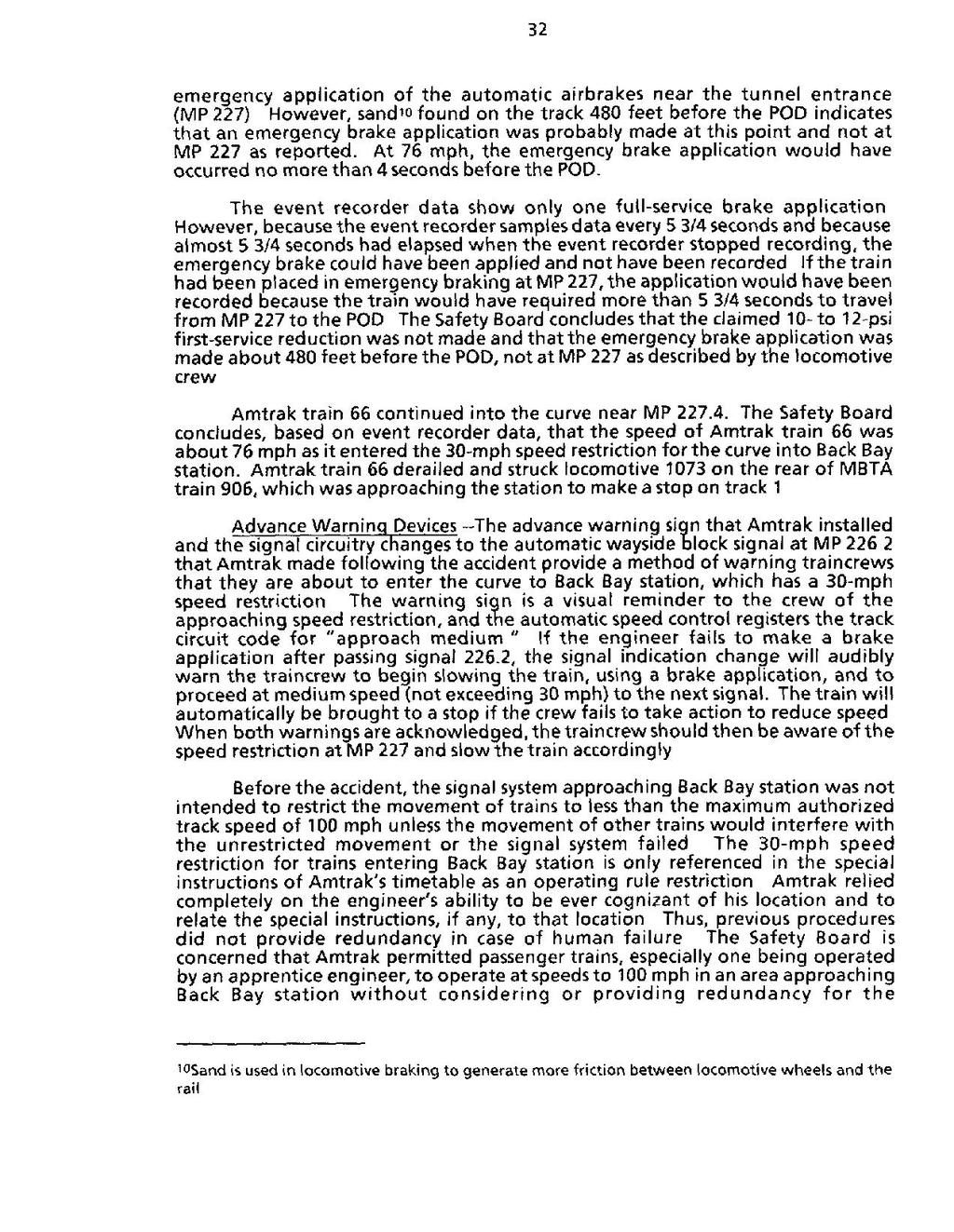32
emergency application of the automatic airbrakes near the tunnel entrance (MP 227). However, sand[1] found on the track 480 feet before the POD indicates that an emergency brake application was probably made at this point and not at MP 227 as reported. At 76 mph, the emergency brake application would have occurred no more than 4 seconds before the POD.
The event recorder data show only one full-service brake application. However, because the event recorder samples data every 5 3/4 seconds and because almost 5 3/4 seconds had elapsed when the event recorder stopped recording, the emergency brake could have been applied and not have been recorded. If the train had been placed in emergency braking at MP 227, the application would have been recorded because the train would have required more than 5 3/4 seconds to travel from MP 227 to the POD. The Safety Board concludes that the claimed 10-to 12-psi first-service reduction was not made and that the emergency brake application was made about 480 feet before the POD, not at MP 227 as described by the locomotive crew.
Amtrak train 66 continued into the curve near MP 227.4. The Safety Board concludes, based on event recorder data, that the speed of Amtrak train 66 was about 76 mph as it entered the 30-mph speed restriction for the curve into Back Bay station. Amtrak train 66 derailed and struck locomotive 1073 on the rear of MBTA train 906, which was approaching the station to make a stop on track 1.
Advance Warning Devices—The advance warning sign that Amtrak installed and the signal circuitry changes to the automatic wayside block signal at MP 226.2 that Amtrak made following the accident provide a method of warning traincrews that they are about to enter the curve to Back Bay station, which has a 30-mph speed restriction. The warning sign is a visual reminder to the crew of the approaching speed restriction, and the automatic speed control registers the track circuit code for "approach medium." If the engineer fails to make a brake application after passing signal 226.2, the signal indication change will audibly warn the traincrew to begin slowing the train, using a brake application, and to proceed at medium speed (not exceeding 30 mph) to the next signal. The train will automatically be brought to a stop if the crew fails to take action to reduce speed. When both warnings are acknowledged, the traincrew should then be aware of the speed restriction at MP 227 and slow the train accordingly.
Before the accident, the signal system approaching Back Bay station was not intended to restrict the movement of trains to less than the maximum authorized track speed of 100 mph unless the movement of other trains would interfere with the unrestricted movement or the signal system failed. The 30-mph speed restriction for trains entering Back Bay station is only referenced in the special instructions of Amtrak's timetable as an operating rule restriction. Amtrak relied completely on the engineer's ability to be ever cognizant of his location and to relate the special instructions, if any, to that location. Thus, previous procedures did not provide redundancy in case of human failure. The Safety Board is concerned that Amtrak permitted passenger trains, especially one being operated by an apprentice engineer, to operate at speeds to 100 mph in an area approaching Back Bay station without considering or providing redundancy for
- ↑ Sand is used in locomotive braking to generate more friction between locomotive wheels and the rail.
